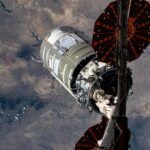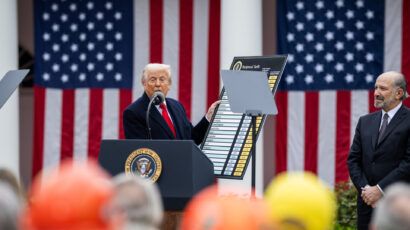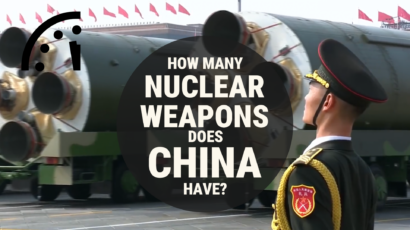Does missile defense work?
By Kingston Reif | February 8, 2013
After launching a rocket in December and vowing to conduct a third nuclear test, North Korea followed up last week by saying it would take measures “stronger than a nuclear test” and releasing a bizarre YouTube video that appeared to depict a rocket attacking an American city. (The video has since been removed from YouTube; excerpts and commentary can be watched here.)
After launching a rocket in December and vowing to conduct a third nuclear test, North Korea followed up last week by saying it would take measures “stronger than a nuclear test” and releasing a bizarre YouTube video that appeared to depict a rocket attacking an American city. (The video has since been removed from YouTube; excerpts and commentary can be watched here.)
This latest round of saber-rattling from Pyongyang has, not surprisingly, prompted much beltway hand-wringing about the state of US missile defense, including calls to beef it up. But missile defense is not the panacea that many American politicians make it out to be.
Predictably, Republicans pointed to the rocket launch to accuse the Obama administration of degrading defenses that protect the US homeland. House Armed Services Committee Chairman Buck McKeon, a California Republican, said that national missile defenses have been “subject to severe and unwarranted cuts in recent years,” and pledged to “continue to work for increased funding and more capable systems that help keep our nation safe.” Likewise, an anonymous senior Senate aide told the Washington Post‘s Jennifer Rubin that “You can be certain North Korea will share all the data and lessons learned from this test [with Iran]. It’s more critical than ever to fund additional missile defense interceptors for Alaska and California, and to fully fund an East Coast intercept site.”
The Obama administration has argued that existing national missile defenses are more than capable of countering North Korea but is also seeking to improve them. Defense Secretary Leon Panetta told CNN, “I’m very confident that American defense capabilities are able, no problem, to block a rocket like this one.” In addition, the White House is strengthening regional missile defense cooperation with allies in East Asia. Washington is also moving forward with its plan to deploy SM-3 interceptors in Europe to provide protection against all possible missile threats from Iran and expanding missile defense deployments to protect US allies and troops in the Middle East. One of the goals of this global push is to demonstrate America’s commitment to the defense of its allies.
Lost in the latest bout of fealty to missile defense, however, is a much-needed dose of perspective about its efficacy and contribution to US national security. Are US missile defenses as capable as Panetta would have us believe? Do they contribute to the deterrence of rogue state threats? Could increasing US missile defense in East Asia undermine nuclear stability by making China feel less secure? Before the administration rushes to expand America’s missile defense footprint, it must be more mindful of the limitations of this strategy.
US defenses against long-range and intercontinental missile threats currently consist of 30 interceptors in Alaska and California and a network of supporting tracking radars and early warning satellites. Known as ground-based midcourse defense (GMD), this system is designed to intercept incoming missiles as they are travelling through the vacuum of space. But even though the Defense Department has invested approximately $39 billion in this midcourse defense system since 1996, it remains troubled. For example, a 2012 report by the National Research Council said that the system “lacks fundamental features long known to maximize the effectiveness of a midcourse hit-to-kill defense capability against even limited threats.” Similarly, the Pentagon’s Operational Test and Evaluation Office has said for nearly a decade that the system “has demonstrated a limited capability against a simple threat.” The National Research Council report and another one like it by the Defense Department’s Defense Science Board also identified problems with elements of the proposed missile defense architecture for Europe.
One of the missing features of all US missile defense systems that operate outside the atmosphere is the ability to discriminate between real warheads and decoys. The National Research Council report highlighted the fundamental importance of discrimination, noting that defenses will eventually need to confront “decoys and other penetration aids and tactics … that adversaries will have deliberately designed to frustrate U.S. defenses.” The report went on to note that even more effective missile defenses might not work against such countermeasures.
Given these many failings, the National Research Council recommended a major and costly overhaul of the ground-based midcourse defense system, including the development of new interceptors and radars and their deployment at additional sites in the United States. Nevertheless, last year the House Armed Services Committee authorized the Pentagon to spend $360 million more than it asked for to expand the flawed system. The Committee also provided an additional $100 million to begin deploying existing ground-based or SM-3 interceptors — not the interceptors recommended by the National Research Council — on the East Coast of the United States by the end of 2015 to defend against potential future long-range ballistic missiles launched from Iran.
Even if US defenses were far more effective than they currently are, their benefits against nuclear-armed missiles are often over-exaggerated. If US nuclear and conventional capabilities are insufficient to deter an adversary from using nuclear weapons, it is not clear how imperfect missile defenses would alter that adversary’s calculus. Imperfect defenses could limit some of the damage that would result from a nuclear exchange, but the possibility that even one nuclear weapon could strike the United States is an outcome that no President would consider acceptable. Thus, more missile defenses are unlikely to meaningfully strengthen deterrence because nuclear-armed adversaries know that their chances of inflicting unacceptable damage on the United States would remain high — especially since they could also employ means other than ballistic missiles to deliver nuclear weapons.
In short, missile defense alone cannot protect the United States from nuclear weapons. As the physicist Wolfgang Panofsky once wrote, “That goal has to be attained by dissuasion, where dissuasion means a combination of diplomacy and deterrence.”
Diplomacy is essential not only to reducing the threats posed by rogue states, but also to preventing the potential negative consequences of missile defense deployments. While the intention behind US missile defense is not to threaten Russia or China’s ability to strike the United States with nuclear weapons, both Russia and China fear otherwise. Moscow’s concerns about US missile defenses in Europe appear to be the main stumbling block to further bilateral US and Russian nuclear arms reductions. China, meanwhile, is concerned that the expansion of US regional defenses in East Asia is designed to counter both North Korea and China’s growing arsenal of conventionally-armed theater ballistic missiles, and could be augmented by long-range interceptors that would threaten its strategic nuclear deterrent.
The United States must use the full range of diplomatic, economic, and security tools at its disposal to mitigate the threats posed by North Korea and Iran. Missile defense has a role to play, but it’s neither as grandiose nor as significant as many claim. A sensible approach would condition deployments on realistic assessments of both the actual threat and the effectiveness of our defenses and include more engagement with Russia and China. In fact, overstating the importance and effectiveness of missile defense could provide US policymakers with a false sense of security, which could prompt them to be more aggressive in dealing with rogue states — thereby increasing the risk of war.
Together, we make the world safer.
The Bulletin elevates expert voices above the noise. But as an independent nonprofit organization, our operations depend on the support of readers like you. Help us continue to deliver quality journalism that holds leaders accountable. Your support of our work at any level is important. In return, we promise our coverage will be understandable, influential, vigilant, solution-oriented, and fair-minded. Together we can make a difference.
Topics: Columnists, Missile Defense, Nuclear Weapons















